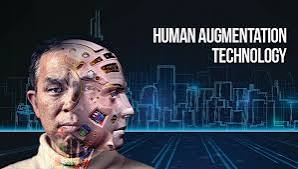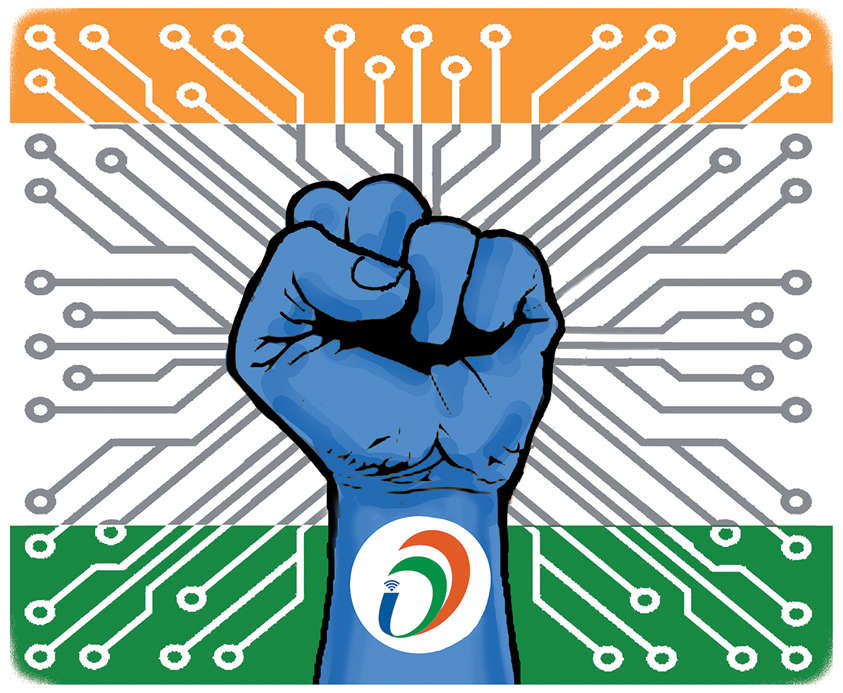
Human Enhancement Technology: Merging Man with Machine
Human Enhancement Technology blurs the line between biology and machines, aiming to elevate human abilities physically and mentally. From wearable sensors to brain-computer interfaces, these innovations promise better health, cognition, and performance. However, they bring ethical challenges, societal shifts, and workforce changes.
✨ Raghav Jain

Introduction
Imagine a future where humans don’t just rely on natural abilities but enhance them with technology—boosting strength, intelligence, senses, and even longevity. This is no longer science fiction but a rapidly advancing reality known as human enhancement technology. It involves integrating machines, electronics, and biotechnology with the human body to augment physical and mental capabilities.
From neural implants that improve memory to exoskeletons helping the disabled walk, these technologies are reshaping what it means to be human. While the potential benefits are revolutionary, this merging of man and machine raises ethical questions, health concerns, and societal challenges.
In this article, we’ll explore the current state of human enhancement technology, its promising applications, risks, and how it might change our future. Human enhancement technology represents one of the most fascinating and rapidly evolving frontiers of science and innovation today. At its core, this field explores the merging of human capabilities with advanced machinery, aiming to transcend the natural limitations of the human body and mind. The idea of blending man with machine has long captivated imaginations, once only the subject of science fiction, but now increasingly becoming a reality due to breakthroughs in fields like biotechnology, robotics, artificial intelligence, and nanotechnology. This merging holds enormous promise—not just for enhancing physical strength or cognitive functions but also for transforming medicine, communication, and even the very concept of what it means to be human.
The notion of human enhancement technology begins with the understanding that humans are biological organisms bound by certain physical and mental constraints. While our bodies and brains are incredibly sophisticated, they inevitably face challenges such as aging, disease, injury, and cognitive limits. Human enhancement aims to overcome or bypass these barriers through technological interventions. These interventions can be restorative, like prosthetic limbs that restore mobility after amputation, or they can be augmentative, improving abilities beyond natural human capacity.
One of the most visible areas of human-machine integration is in prosthetics and bionics. Advances in materials science and electronics have led to prosthetic limbs that are not only more functional but also responsive to neural signals. This means users can control artificial arms or legs with their thoughts, restoring a sense of agency and improving quality of life. Furthermore, bionic enhancements can amplify human strength or precision, opening possibilities for those in physically demanding professions or environments. Scientists are developing neural interfaces that connect directly with the brain or nervous system, enabling seamless communication between human and machine.
Beyond physical enhancements, cognitive augmentation is another key dimension. Technologies such as brain-computer interfaces (BCIs) are being researched to enable people to interact with computers or other devices directly through brain activity. This has implications for people with disabilities, allowing them to control communication aids or wheelchairs, but also for healthy individuals who may someday enhance memory, learning speed, or focus through implanted devices or external wearables. Artificial intelligence plays a crucial role here by interpreting neural data and providing real-time feedback or assistance. These interfaces blur the boundaries between human thought and digital processing, heralding a future where cognition can be extended or amplified through technology.
Nanotechnology also promises to revolutionize human enhancement by allowing intervention at a molecular or cellular level. Tiny machines or particles could one day repair tissue damage, fight disease from within, or even enhance sensory perception. Imagine nanosensors embedded in the body that monitor health continuously and release medicine only when needed, or nanobots that enhance muscle regeneration. The potential for vastly improving healthspan and lifespan is enormous.
However, the merging of man and machine is not without significant ethical, social, and philosophical questions. As these technologies become more advanced and accessible, issues of fairness and equity arise. Who will have access to enhancements, and could they exacerbate social inequalities? Would enhanced humans have unfair advantages in employment, education, or sports? There are also concerns about identity and humanity. When parts of our cognition or bodies are replaced or augmented by machines, does that change what it means to be human? Some worry about losing autonomy to algorithms or becoming overly dependent on technology.
Privacy and security are equally critical. Brain-computer interfaces and implantable devices could be vulnerable to hacking or unauthorized surveillance. Protecting individuals’ mental privacy will require robust safeguards and regulatory frameworks. Furthermore, there are risks associated with long-term health effects of implants and nanomaterials that must be carefully studied.
Despite these challenges, the progress in human enhancement technologies is moving forward at an extraordinary pace. From cochlear implants that restore hearing, to exoskeletons that allow paraplegics to walk, to wearable devices that monitor vital signs in real-time, the integration of technology and biology is reshaping healthcare and human potential. The military and industrial sectors are investing heavily in enhanced soldier systems and worker assistive devices, further accelerating innovation.
Moreover, the entertainment and communication industries stand to benefit greatly. Augmented reality (AR) and virtual reality (VR) technologies could merge with sensory enhancements to create immersive experiences that stimulate multiple senses simultaneously. This could revolutionize learning, gaming, social interaction, and even mental health therapies by allowing personalized, interactive environments.
In the near future, we might see the rise of “cyborg” individuals who integrate various enhancements into their daily lives—not out of necessity but by choice to improve their performance or experience. Such individuals might use neural implants to instantly translate languages, enhance memory recall, or interface with smart environments seamlessly. Others might adopt genetic editing technologies to remove predispositions to diseases or enhance physical traits before birth.
The convergence of these technologies also pushes innovation in artificial intelligence, robotics, and biotechnology to collaborate and evolve hand in hand. AI algorithms can optimize enhancement devices, predict health outcomes, and personalize treatments, while robotics provides the mechanical precision and durability required for physical augmentation.
One cannot ignore the cultural and societal shifts that will accompany widespread human enhancement. Societies will need to reconsider laws, ethics, and norms to accommodate augmented humans. Discussions on rights, responsibilities, and identity will become paramount. Education systems may evolve to prepare future generations for a world where human capacities are malleable through technology.
In conclusion, human enhancement technology symbolizes a profound shift in human evolution. By merging man with machine, we unlock unprecedented possibilities for improving health, cognitive abilities, and quality of life. While the journey is fraught with ethical and social complexities, the promise of transcending biological limits inspires continued exploration and innovation. Ultimately, this technological integration challenges us to rethink what it means to be human and how we envision our future in an increasingly interconnected and enhanced world. The future is not just about machines or biology alone, but the powerful synergy created when the two come together as one.
What is Human Enhancement Technology?
Human enhancement technology (HET) refers to any technological intervention designed to improve human functions beyond typical biological limits. Unlike medical devices meant to restore lost abilities, enhancement aims to amplify natural skills or create entirely new ones.
Examples include:
- Brain-computer interfaces (BCIs) connecting minds to computers
- Genetic engineering to alter DNA for better health
- Wearable robotics (exoskeletons) to boost strength or endurance
- Sensory augmentation like bionic eyes or enhanced hearing
- Cognitive enhancers or smart drugs to improve memory and focus
HET blends fields like biotechnology, cybernetics, artificial intelligence, and nanotechnology to merge human biology with machines.
How Human Enhancement Technology Works
The technology works by interfacing electronic or mechanical devices with biological systems. This can happen externally (wearables) or internally (implants).
Key methods include:
- Neural Implants and Brain-Computer Interfaces
- Electrodes implanted in the brain detect neural signals and convert them into commands. For example, paralyzed patients can control prosthetic limbs or computers by thought alone.
- Genetic Editing
- Tools like CRISPR allow precise editing of genes to remove diseases or improve physical traits. This technology could potentially extend life or enhance intelligence.
- Wearable Robotics and Exoskeletons
- These devices support or amplify movement, helping people with disabilities walk or workers lift heavy loads.
- Sensory Prosthetics
- Bionic eyes replace damaged retinas with electronic sensors, restoring vision. Cochlear implants enable hearing by directly stimulating auditory nerves.
- Pharmacological Enhancers
- Smart drugs or nootropics improve focus, memory, or alertness, pushing mental performance beyond normal levels.
Benefits of Merging Man with Machine
- Restoring and Enhancing Abilities
- Beyond helping disabled individuals regain lost functions, enhancements can improve natural skills like memory, strength, and sensory perception for everyone.
- Boosting Productivity and Efficiency
- Workers equipped with exoskeletons can perform physically demanding tasks with less fatigue and injury risk.
- Expanding Human Experience
- Sensory enhancements could allow people to see ultraviolet light or hear ultrasonic sounds, opening new realms of perception.
- Extending Lifespan and Healthspan
- Gene therapies and nano-robots could repair cellular damage, slow aging, and prevent chronic diseases.
- Enhancing Cognitive Abilities
- Brain implants or nootropics might enhance learning speed, creativity, and problem-solving skills.
Challenges and Ethical Considerations
While exciting, human enhancement technology raises many concerns:
- Safety Risks
- Implants and wearables carry risks of infection, rejection, or malfunction. Long-term effects are often unknown.
- Equity and Access
- Who gets access to enhancements? There’s a risk that only wealthy individuals or countries can afford them, widening social inequalities.
- Loss of Human Identity
- Some worry merging with machines might blur what it means to be human, raising philosophical and psychological questions.
- Privacy and Security
- Brain-computer interfaces and implants could be vulnerable to hacking, risking personal data or control over the body.
- Ethical Use of Genetic Editing
- Modifying embryos or enhancing intelligence could lead to ‘designer babies’ and unforeseen societal impacts.
Current Applications and Innovations
- Neuralink by Elon Musk aims to develop implantable brain chips for treating neurological disorders and enhancing cognition.
- Boston Dynamics’ exoskeletons support industrial workers and military personnel with extra strength.
- Bionic eyes like the Argus II have restored partial vision to blind patients.
- CRISPR trials are underway to treat genetic diseases like sickle cell anemia.
- Nootropic supplements and wearable brain stimulators claim to improve mental performance.
These innovations hint at a future where human-machine synergy will be common.
The Future: What to Expect
Human enhancement technology is likely to advance rapidly over the next decades. Possible future developments include:
- Direct mind-to-mind communication through brain interfaces
- Artificial organs grown or 3D-printed to replace failing ones
- Enhanced humans with augmented reality integrated into vision
- Personalized gene therapies customized to each individual’s DNA
- Ethical frameworks and regulations balancing innovation with safety
This merging of biology and technology could unlock potential previously thought impossible.
Daily Practices for Adapting to Human Enhancement Technology
Even today, there are small steps you can take to prepare for this tech-driven future:
- Stay informed about new developments in biotechnology and AI
- Explore wearable health devices like fitness trackers to understand human-machine interaction
- Practice digital literacy and cybersecurity to protect your data
- Engage in cognitive exercises and brain training apps to boost natural mental fitness
- Participate in ethical discussions about technology’s role in society
Common Misconceptions About Human Enhancement Technology
“It’s only for superheroes or sci-fi fans.”
→ False! Many enhancements are already helping real people with disabilities.
“Merging with machines will make us less human.”
→ Wrong. Enhancements can be tools to empower humans, not replace humanity.
“It’s all expensive and inaccessible.”
→ Initially yes, but as tech advances, costs usually decrease and access widens.
“Brain implants control your thoughts.”
→ No credible evidence of mind control; implants respond only to specific commands.
“Human enhancement will cause society to collapse.”
→ Technology always changes society; the goal is managing it ethically and inclusively.
Conclusion
Human enhancement technology stands at the fascinating crossroads of biology and machinery. By merging man with machine, we unlock new possibilities for health, performance, and experience beyond natural limits. This revolution promises to heal disabilities, extend lives, and empower minds.
However, with great power comes great responsibility. Balancing innovation with ethics, safety, and equality will define how beneficial this fusion becomes. Whether you’re excited or cautious, one thing is clear: the future of human evolution will be shaped not just by nature, but by technology too.
Embrace the changes, stay curious, and think deeply about what it means to be human in a world where man and machine are intertwined.
Q&A Section
Q1:- What is Human Enhancement Technology?
Ans :- Human Enhancement Technology refers to the use of advanced tools and devices to improve or extend human physical and cognitive abilities beyond natural limits.
Q2:- How do wearable devices contribute to human enhancement?
Ans :- Wearables like smartwatches and fitness trackers monitor health and optimize performance, helping users improve fitness, manage diseases, and enhance daily life.
Q3:- What role do neural implants play in merging man with machine?
Ans :- Neural implants connect the brain to computers, enabling restoration of lost senses, controlling devices by thought, and potentially boosting cognition.
Q4:- How can exoskeletons improve human physical capabilities?
Ans :- Exoskeletons are wearable robotic suits that assist movement, strength, and endurance, helping disabled individuals and enhancing industrial or military workers’ performance.
Q5:- What ethical concerns arise from human enhancement technologies?
Ans :- Issues include privacy, inequality, consent, identity changes, and potential misuse, raising questions about fairness and long-term societal impact.
Q6:- How might AI integration enhance human decision-making?
Ans :- AI can augment human cognition by providing real-time insights, predictive analytics, and decision support, making humans more efficient and informed.
Q7:- What is the potential impact of brain-computer interfaces (BCIs) on communication?
Ans :- BCIs can enable direct brain-to-brain or brain-to-machine communication, transforming how people interact, especially those with speech or mobility impairments.
Q8:- How could human enhancement technologies affect the workforce?
Ans :- They may increase productivity and create new job roles but also risk widening skill gaps and displacing workers without access to enhancements.
Q9:- What advancements in biotechnology support human enhancement?
Ans :- Genetic editing, regenerative medicine, and synthetic biology enable repairing or upgrading human cells and tissues for better health and performance.
Q10:- How is society preparing for the integration of man and machine?
Ans :- Through policy-making, ethical guidelines, public debates, and research aiming to balance innovation with safety, equity, and human rights.
Similar Articles
Find more relatable content in similar Articles

The Dark Web Economy: What’s R..
Beneath the surface of the int.. Read More

Digital India: How Technology ..
Digital India leverages techn.. Read More

The Death of the Charging Port..
“As technology evolves, the tr.. Read More

E-Waste Crisis: The Race to Bu..
The rapid growth of electronic.. Read More
Explore Other Categories
Explore many different categories of articles ranging from Gadgets to Security
Smart Devices, Gear & Innovations
Discover in-depth reviews, hands-on experiences, and expert insights on the newest gadgets—from smartphones to smartwatches, headphones, wearables, and everything in between. Stay ahead with the latest in tech gear
Apps That Power Your World
Explore essential mobile and desktop applications across all platforms. From productivity boosters to creative tools, we cover updates, recommendations, and how-tos to make your digital life easier and more efficient.
Tomorrow's Technology, Today's Insights
Dive into the world of emerging technologies, AI breakthroughs, space tech, robotics, and innovations shaping the future. Stay informed on what's next in the evolution of science and technology.
Protecting You in a Digital Age
Learn how to secure your data, protect your privacy, and understand the latest in online threats. We break down complex cybersecurity topics into practical advice for everyday users and professionals alike.
© 2025 Copyrights by rTechnology. All Rights Reserved.